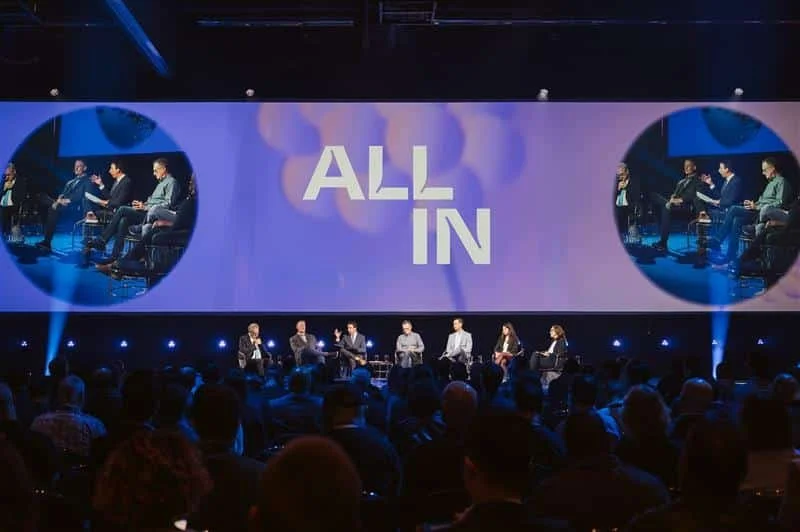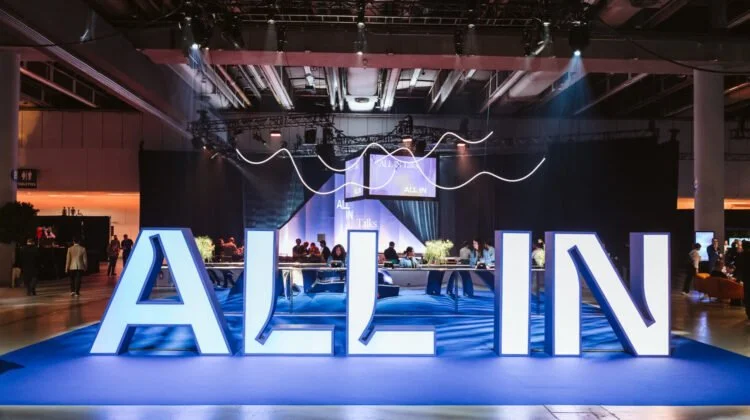All in AI 2025 – Canada’s Largest AI Conference.
El Wong, Regional Lead, Canada, visits All in AI 2025 – Canada’s Largest AI Conference.
Going to All in AI 2025 – Canada’s Largest AI Conference
By El Wong, SHE IS AI Regional Lead, Canada
Over 6,500 participants attended the two day conference packed with founders, policy leaders, big-tech operators, researchers and ecosystem builders to ask a timely question: How does Canada turn AI advantage into shared prosperity?
From the opening address to the last hour, three themes stood out: sovereignty and infrastructure, enterprise adoption and the human layer: skills, safety and inclusion.
Canada’s Minister of AI, Evan Soloman framed AI as a national ambition, building a competitive, inclusive AI economy that benefits all Canadians, not just tech hubs. He also said we need to convert Canada’s research strength into economic capacity related to talent retention, commercialization and scaling homegrown companies.
Investing across the stack (compute, data, cloud) to ensure resilience, independence and global competitiveness. And trust and safety coupling innovation with safeguards, governance and responsible adoption so enterprise and public trust accelerate together.
A summary of each theme:
Sovereignty and Infrastructure Infrastructure sovereignty is an economic strategy for Canada. Leaders stressed digital independence and collaboration across the stack so Canadian firms can build with resilience and speed.
Enterprise Adoption
It was made very clear that the next phase is operational. Moving beyond proof of concept to scaled systems, and from dashboards to agents and from pilots to profits and losses. NVIDIA, Cohere and telecom leaders spotlighted the “agentic inflection”, essentially deploying AI workers that collaborate across workflows and markets, not just automating a few single steps.
The Human layer
Bridging research, venture and talent as well as inclusion treated as core infrastructure. Reskilling at scale, open paths into AI careers and accessible innovation models to close the adoption gap.
Inclusion as core infrastructure led me to my interview with Charlotte.
From Finance to AI: Charlotte's Journey Shows Why Your Voice Matters in Tech
Charlotte never planned to work in AI. The French engineer started her career in marketing strategy consulting, drawn to numbers and data. A move to New York opened doors to data analytics, and she went all in.
When L'Oreal approached her to build their Tech Activated Solutions team, she stepped into a role creating AI products for internal employees. Today, she leads work at Modiface, L'Oreal's AI-powered beauty tech division.
Her story reflects what ALL IN AI Montreal emphasized this year: adding a human layer to AI development. This means bridging research, venture capital, and talent inclusion as core infrastructure, not afterthoughts.
The Moment Everything Changed
Early in her consulting career, Charlotte completed all the analysis for a major client presentation. Her boss told her she wouldn't be presenting. The client was a big beer company with a male-dominated culture.
"The image he gave me stuck with me for a long time," Charlotte recalls. "As if there was a plane pilot saying 'I think I can land, I'm going to try but you know I'm not sure.' You need to project confidence in what you do."
The lesson transformed her approach. "This is where I realized how you present, package or communicate what you're doing is almost as important as what you're developing."
Why Diversity Drives Better AI
At Modiface, Charlotte's team maintains a 50/50 gender split. Their advanced AI research team of five people includes three women and two men.
This balance creates better products. When testing a new virtual try-on feature using generative AI for hair, the diverse team caught problems others might miss.
"On my side, I have very curly hair and curly is difficult for the models to catch," Charlotte explains. "When we do AI for beauty at L'Oreal, having this balance of men and women and all the different beauties in the world is super critical."
The team audits their models for bias, using both internal and external guidelines, and they test extensively across different hair types, skin tones, and features. Real diversity on the team means real testing before products launch.
Advice for Women Entering AI
Charlotte's path into AI involved three months of intensive training, studying Fridays and Saturdays while working full-time. Her engineering background helped, but curiosity drove her learning.
She noticed something in her second year of engineering when she was the only woman in a class of 40 people. "Men tend to be more confident than women. Women want to be more sure of themselves before they speak. Men already project what they could become."
Her advice? "Speak up more. You have valuable insights. Sometimes we don't authorize ourselves to speak up."
But she adds a crucial point: "Don't do it the same way as men. Be yourself, be OK within yourself, and do it your own way."
Your Questions Open Doors
Charlotte admits she still doesn't know exactly what she wants to do next. "By asking questions and being curious, it opens up inspiration, new opportunities and possibilities."
The AI field needs your perspective. Your questions. Your experiences. The technology opens up possibilities when diverse voices shape how we build it. Re-skilling programs, mentorship opportunities, and companies prioritizing inclusion create accessible paths into AI careers. Charlotte's journey from finance to leading AI innovation shows these paths exist.
Start asking questions.
Sign up for training.
Speak up in meetings.
Your voice belongs in AI development.
The future of AI needs you at the table.
This year’s conference was more about execution and less about hype, and conversations were cross-functional, urgent and grounded.
Some key themes from the ALL IN AI conference include:
• The human layer, which is bridging research, venture, and talent
• Inclusion that is treated as core infrastructure
• Re-skilling at scale to open paths into AI careers
• Accessible innovation models to close the adoption gap as all the ingredients: world-class research, a vibrant startup scene and serious enterprise demand.





